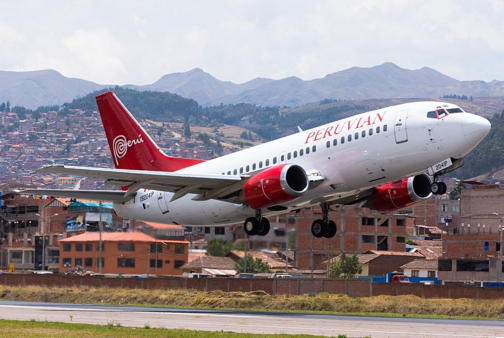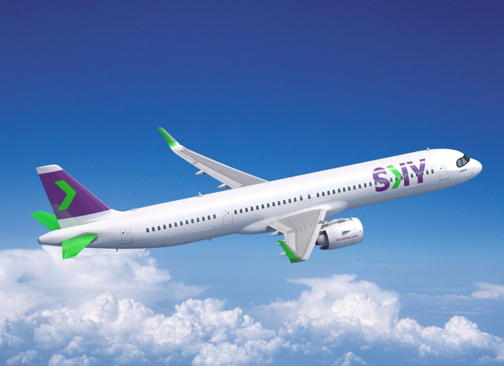
(above) Viva Air Peru and Sky Airline are the two biggest low-cost carriers in Peru. Photo: Primx28 via Wikimedia
Are Low Cost Carriers Taking Over Peru?
February 24, 2020 - Original article: simpleflying.com
by Daniel Martínez Garbuno
The Peruvian Association of International Air Transport Carriers (AETAI) expects that low-cost airlines will take up to 30% of the market share in Peru. In just three years since the low-cost model was adopted in the country, it has had tremendous growth. Let’s take a look.
The new model left out long-standing airlines
In 2018, LC Peru ceased operations. This airline operated in Peru for 25 years. It had a fleet of 15 aircraft and flew to 16 destinations, all domestic.
When it ceased, LC Peru wasn’t, by any standard, Peru’s largest airline. It went down after it failed to renovate its policy with a local company and after it delayed its lease payments, owing approximately $5.7 million USD.
Then, in November 2019, Peruvian Airlines also ceased operations. At the time of its bankruptcy, Peruvian Airlines had an 8.3% share of the domestic market in Peru, behind LATAM Airlines Peru and Viva Air Peru.
The month prior, a Peruvian jury froze the bank accounts of the airline. This gave way to the imminent cessation of operations.
Even with that, last week the government gave the ceased airline a sanction of more than a million USD. Who will pay it? Who knows!
So, why did these two airlines cease operations? It is no coincidence that it happened at the same time as low-cost carriers such as Sky Airline and Viva Air consolidated their presence in the country. Other carriers also took a hit, such as Avianca, which currently decided to focus more on other markets rather than Peru, as we covered here before.
Still, the biggest giant of the Peruvian air market continues to hold the majority of the share: LATAM. Which airlines are now its biggest rivals?
(below) Peruvian Air left a gap of 10% in the domestic market. Photo: Primx28 via Wikimedia

Which low-cost carriers have entered Peru?
In less than a year, Sky Airline, the Chilean low-cost carrier, became the third-largest domestic operator in Peru, according to CAPA. Also, as of February 2020, Viva Air Perú (which debuted back in 2017) already has 12.5% of the domestic available seats per kilometer (ASK).
Both airlines are working to incorporate the low-cost model in the country. Recently Sky signed an agreement with Airbus for 10 A321XLR which would allow the company to expand its international route network.
In just three years, the low-cost carriers have taken up to 20% of the market in Peru. And now, after the disappearance of Peruvian and LC Peru, these new players could get 30% of the market share by 2021, said Carlos Gutiérrez, president of AETAI to the local newspaper, El Comercio.
Just with the exit of Peruvian, 10% of the domestic market in the country is open in 2020. This means up to a million passengers that are currently waiting for the best bidder. Does this mean that Sky will break the million passenger mark this year? Very likely, as in 2019, the airline carried 940,000 passengers. Viva, on the other hand, carried a million and a half.
(below) Sky Airline could fill the gap in the domestic market of Peru. Photo: Airbus
Looking into the future
As we know, South America is struggling with very long haul flights, mainly with Asia, due to its geographical location. So, for now, the battle in the subcontinent is for the domestic and regional flights.
The low-cost carriers, from Mexico to Argentina, are poised to win most of the seats. This is not only because of the model that they are presenting. Also, the traditional carriers, such as Aeromexico, Avianca, LATAM, Aerolíneas Argentinas and GOL have several issues to deal with. From the MAX crisis to the lack of infrastructure in main international airports, there’s a lot going on in Latin America.
Peru is just like that. Given that the country is currently growing steadily, it is attracting the air traffic, but, Lima’s international airport is waiting for a much-needed renovation. This leaves the secondary airports with space to absorb the uptick, and some low-cost carriers may be the biggest winners in this scenario.
What do you think? Is the low-cost model suitable for Peru?